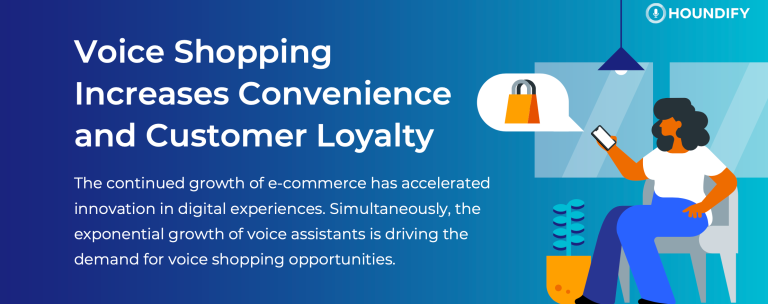Voice-enabling kiosks is a natural evolution for many in the retail industry who are already using interactive kiosks for a variety of customer service purposes, such as price checking. Adding voice AI technology would further extend the usefulness of these devices by allowing customers to locate items or shop for additional sizes, colors, and products that may not be available in-store and order them, compare product features, and determine product availability.
In a post-pandemic world, voice-enabled self-service kiosks provide a level of comfort and a sense of safety for in-store shoppers by removing the need to touch the surface of the kiosk and providing a contactless shopping experience. Voice-enabled kiosks built with advanced voice AI technology improve accessibility and convenience by allowing customers to ask questions naturally, just like they would when talking to an employee. It can also answer questions even if the customer doesn’t know exactly where to find the service on the kiosk—removing the need for an endless series of types and swipes.
Here are some examples of queries customers can ask a voice-enabled self-service kiosk:
“Do you have these shoes in size 7?”
“Where is Tupperware located?”
“What’s the difference between these two types of vacuums?”
“Do you have this dress in blue at any of your other locations within 25 miles?”
When shopping, customers can find getting help with locating items or making a purchase difficult and frustrating if they have to wait in line or search for help. With voice-enabled kiosks, customers can get their questions answered anytime without having to hunt for a sales associate, stand in long lines, or wait while the correct person is located to get the answers to otherwise simple questions. By incorporating voice AI into self-service kiosks and hand-held devices for employees, retailers can ensure their customers get the service they need without having to wait.
Retailers are discovering the power of voice AI for their mobile apps, websites, and self-service kiosks and experiencing improved customer experience, greater operational efficiency, employee satisfaction, increased revenue, and decreased operational costs. As the variety of ways in which voice AI can be enabled in retail expands, retailers will continue to find ways to innovate and discover the endless possibilities of what can be achieved through voice technology.
By using a custom voice assistant and a custom wake word, retailers can personalize and differentiate their shopping experiences. From sonic branding to custom domains, all of the elements of a custom voice assistant work to increase brand recognition and better serve the customer. Retailers looking to add voice AI to their roadmaps should evaluate the benefits of voice assistants and consider which voice-enabled devices would best serve their customers, employees, and company before their customers turn to voice-enabled competitors for better shopping experiences.
Interested in learning more about voice assistants in retail? Check out our infographic, Voice Shopping Increases Convenience and Customer Loyalty.
Recently, Opus Research published a research report based on a global survey of 320 business leaders in 8 industries conducted to get the pulse of the state of voice assistant implementation and the trends toward custom voice AI solutions. You can read the report in its entirety and see the on-demand webinar to learn, “The Business Value of Customized Voice Assistants”.
At SoundHound Inc., we have all the tools and expertise needed to create custom voice assistants and a consistent brand voice. Explore Houndify’s independent voice AI platform at Houndify.com and register for a free account. Want to learn more? Talk to us about how we can help bring your voice strategy to life.
Kristen is a content writer with a passion for storytelling and marketing. When she’s not writing, she’s hiking, reading, and spending time with her nieces and nephew.










